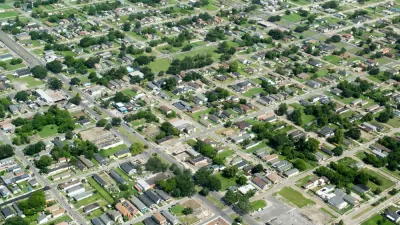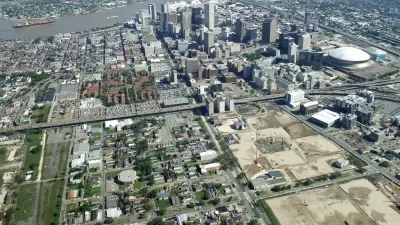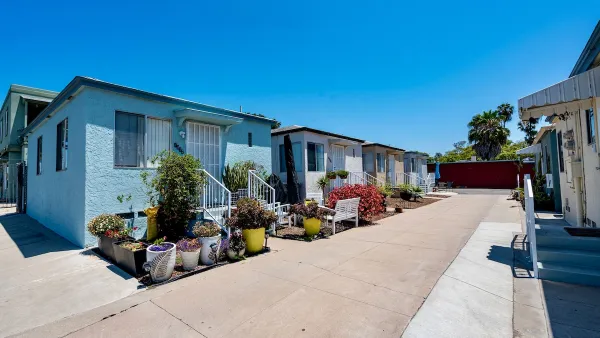The Lower 9th Ward has been slow to return to its pre-Katrina state. A new program by the New Orleans Redevelopment Authority changes recovery strategy in the neighborhood.

A new development subsidy program by the New Orleans Redevelopment Authority (NORA) is designed to provide new homeownership opportunities in the neighborhood that suffered the most catastrophic damage of any part of New Orleans from Hurricane Katrina, the Lower 9th Ward.
The program "offers subsidies to developers willing to turn some of the vacant Lower 9th Ward properties NORA owns into affordable single-family homes for purchase," reports Jessica Williams.
According to Williams, the new program offers relief to residents and stakeholders in the Lower 9th Ward who believe programs in the neighborhood since Katrina haven't helped the neighborhood recover to its previous conditions. Some neighborhood advocates believe NORA programs have failed to support and attract homeowners since Katrina.
"But developers and some city officials say the demand for homes in the Lower 9th Ward has been lackluster because the neighborhood lacks important services. They see it as a chicken-and-egg problem that might be remedied if public subsidies could be used, at least at first, to lure new renters," explains Williams.
FULL STORY: Lower 9th Ward could become home again with subsidies from New Orleans Redevelopment Authority

Planetizen Federal Action Tracker
A weekly monitor of how Trump’s orders and actions are impacting planners and planning in America.

Map: Where Senate Republicans Want to Sell Your Public Lands
For public land advocates, the Senate Republicans’ proposal to sell millions of acres of public land in the West is “the biggest fight of their careers.”

Restaurant Patios Were a Pandemic Win — Why Were They so Hard to Keep?
Social distancing requirements and changes in travel patterns prompted cities to pilot new uses for street and sidewalk space. Then it got complicated.

Platform Pilsner: Vancouver Transit Agency Releases... a Beer?
TransLink will receive a portion of every sale of the four-pack.

Toronto Weighs Cheaper Transit, Parking Hikes for Major Events
Special event rates would take effect during large festivals, sports games and concerts to ‘discourage driving, manage congestion and free up space for transit.”

Berlin to Consider Car-Free Zone Larger Than Manhattan
The area bound by the 22-mile Ringbahn would still allow 12 uses of a private automobile per year per person, and several other exemptions.
Urban Design for Planners 1: Software Tools
This six-course series explores essential urban design concepts using open source software and equips planners with the tools they need to participate fully in the urban design process.
Planning for Universal Design
Learn the tools for implementing Universal Design in planning regulations.
Heyer Gruel & Associates PA
JM Goldson LLC
Custer County Colorado
City of Camden Redevelopment Agency
City of Astoria
Transportation Research & Education Center (TREC) at Portland State University
Camden Redevelopment Agency
City of Claremont
Municipality of Princeton (NJ)





























